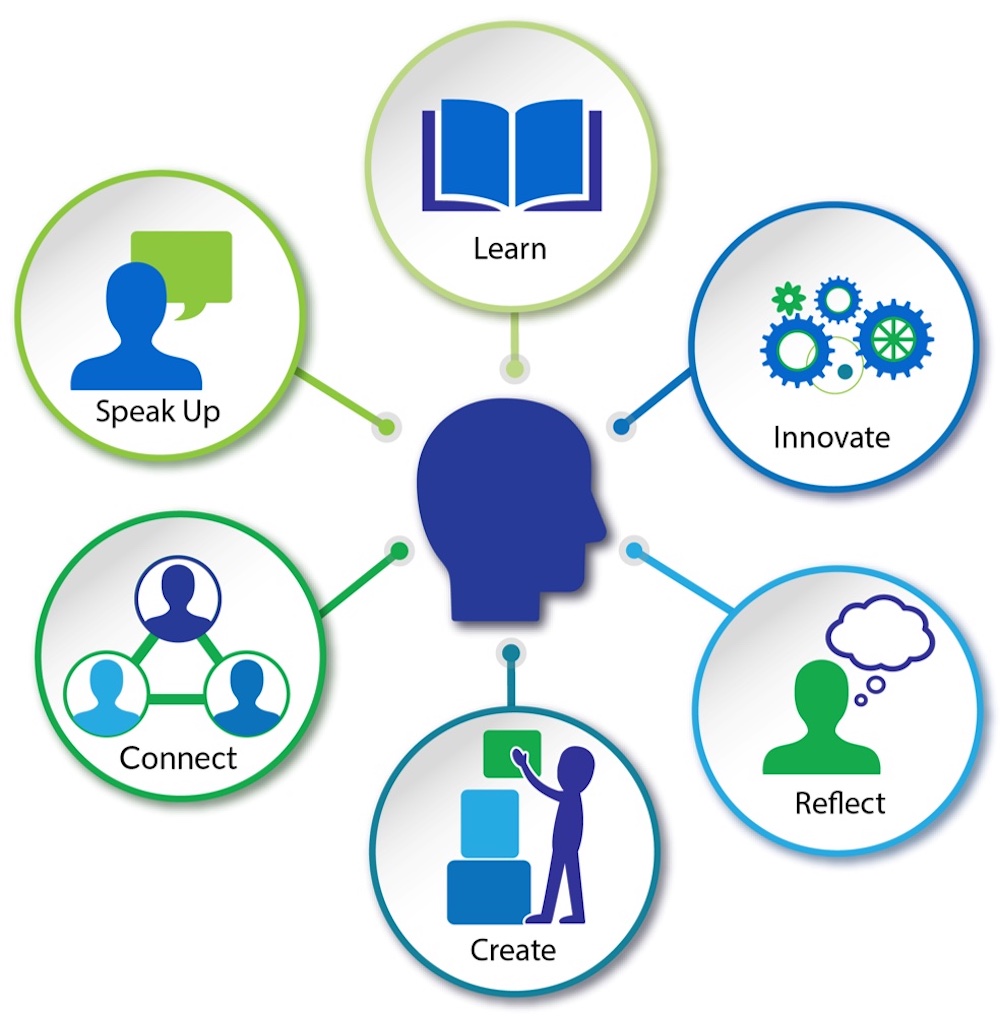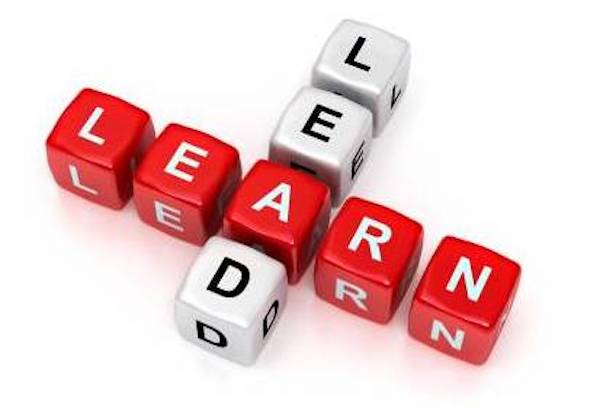Inquiry Blog Post #3
Being a leader among teachers is no easy task. I have taken on leadership roles within my school a couple of times over the last few years (Literacy Leader and Educational Facilitator of our enriched program), and I can affirm what I have heard so many times before: leading teachers can be like trying to herd cats. Teachers have a (justifiably) wide independent streak and will always know a lot more about some things than you do. They’re often overworked and tired and looking for resources they can use in the classroom right now. They already have a lot of high priorities, so how can they spend their preciously guarded mental bandwidth on ideas that did not come from their classroom, that will often require more work from them, and that may not come with an immediate pay-off? Can they just think about it when they have more time (a time that never comes)?

(If you’d like to see the commercial this still was taken from, click here. It’s awfully good.)
I hope I don’t sound too harsh about my colleagues. I have been them, so I absolutely know how they feel. And I am especially in awe of what they have achieved in the last 18 months, what with changing COVID rules, the constant threat of transmission, and their adjustment to extremely challenging schedules and situations (e.g. teaching hybrid in-person/online classes or teaching an entire secondary course in 21 classes). So, when I think about becoming a technology leader in my school, the last thing I want to be is a cat-herder, pushing “solutions” on teachers that add more to their workload without definitively helping their students meet their learning goals, and imposing direction on them instead of listening. I want teachers to understand that I will help them do what they think is right for their classes and slowly come to trust any advice I might have for change.
If that is the case, what kind of leader do I aspire to be? In his article for the Ivey Business School, Hughson describes thirteen different leadership styles. I think two of them best match what I’m aiming for. First is the Servant Leader. Hughson states that “a Servant Leader is primarily focused on the well-being of people and the communities to which they belong.” For me, this would mean meeting the needs of students, teachers and other members of the school community. Hughson also says, “Servant leaders share authority [emphasis mine], put the needs of others first, and help people realize their full potential.” In my context, this means I will take my cues about how to meet the needs of the LLC’s patrons from its patrons. I don’t want to take for granted that I alone know what everyone needs; I plan to continually consult both students and teachers throughout my time as a TL. The second leadership style I plan to adopt (however imperfectly) is the Visionary Leader. According to Hughson, visionary leaders are “problem-solvers [who] rely on abstract thinking to visualize possibilities that most are unable to see.” They are “most effective at inspiring forward momentum and creating a culture of innovation.” It may seem that these two types of leadership conflict: one is grounded in the lived realities of the classroom, while the other is dreaming of the future. However, it’s been my experience that for the continued health of a program, both types of leadership need to be in play. The Teacher Leader needs to meet the immediate learning and teaching needs of the school community, but also needs to look up and see where everything is going. I think I will need to ask myself where technology is leading us, what solutions and opportunities are on the horizon, and what digital skills students will need to have 2, 5, and 10 years down the road. Overall, I think it is very important to be both reactive to what the school community tells me and pro-active in offering new opportunities and resources.
To help me think things through more practically, I like the visual of teacher-leadership designed by the Wisconsin Department of Public Instruction, as pictured below. The tasks described are very broad but they nicely encapsulate what I plan to do to build my LLC as a centre of technological leadership for the school. See my plans below.

LEARN
- Take every opportunity to learn about new technologies and opportunities myself.
- Teach myself about all the technology we already have to the point where I am a highly skilled user.
- Survey all students and staff about what they would like to see in, or from, the LLC in terms of resources, workshops, policy changes, etc. The survey form would provide suggestions as well as space for students and teachers to write in their own. I might also include questions about how much technology they have access to at home. This could give us vital information about what kind of technology we need in the LLC to improve equitable access.
- Offer a suggestion box and/or form for students and staff about what they would like to see/do in the LLC (including the Makerspace).
CONNECT
- Increase my communication with the school administration including reporting to them regularly what we’re doing in the LLC and conferring with them on changes. In her study, Johnston notes that a Teacher-Librarian’s positive relationship with their Principal was determined to be the most important contributing factor in the TL’s effectiveness as a technology leader in their school (2012).
- Create a Library Advisory Committee and a Makerspace Advisory Committee to increase awareness of, and responsibility for, what happens in the LLC. Miller notes, “We need to be in the midst of our colleagues for effective leadership. We need to know what the greatest needs of our teachers, administrators, and students are. … Create a welcoming space in your library that allows for your colleagues to share and be vulnerable. You cannot lead effectively without listening carefully.”
- Hold “Department Teas” in the LLC during which I would ply teachers with food, share new resources, and check in with them about how their needs are being met (or not) by the LLC.
- Survey teachers at the beginning of the year about co-teaching or co-planning possibilities, and check in with teachers about their needs while co-teaching with them, or while their classes are visiting the LLC.
- Sit in on Educational Facilitators meetings to ensure I’m in the loop about major changes in curriculum, teaching, school goals, district technology plans, etc.
- Seek out collaboration opportunities. “Go with the goers!” (Brown, T. in School Library Journal).
CREATE
- Create tutorial videos for teachers and students on technical equipment, software and online tools. Upload the videos to an LLC YouTube channel and post links to the LLC website and in e-mails sent to teachers.
- Write guides to equipment, software and online tools for teachers (e.g. “Database of the Month” and “App of the Month”) based on teachers’ declared needs. These would be posted to the Library “Files” folder on the staff Teams site.
- Create an annual guide with logins, passwords and tips for everything accessible through the LLC website. E-mail it to all students & teachers.
INNOVATE
- Expand our Makerspace so that it focuses on technology (hardware, software and apps).
- Share newly discovered or demonstrated uses for our technology (e.g. Cricut, 3D Printing)
- Research any new educational technology to see where it might fit in our school.
SPEAK UP
- As Margolis puts it, “present [myself] as a continual learner.” He notes that when “teacher leaders explained how they themselves worked through using a new approach with … students … teacher learners admitted their own struggles more openly and displayed more hunger for new approaches.”
- E-mail teachers on a regular basis about new technical guides mentioned above, and new resources and opportunities in our LLC and at the District Resource Centre.
- Offer workshops to teachers on Pro-D days as well as workshops to students during flex time on topics of declared interest and new developments, e.g. online databases, 3D printing, etc.
- Report on technological and other developments in the LLC to staff meetings. As well, have new resources on hand for teachers to explore after the meetings (Brown, T. in School Library Journal).
- Share success stories with samples of student work. Margolis notes this is “quite compelling to teacher learners considering the relative value of a new teaching strategy.”
- Possibly create LLC social media accounts just for teachers (to go with our Instagram account for students) to share new resources, web tools, etc.
REFLECT
- Ask students and staff to “review” the LLC at the end of the year. They could tell us what helped them, what would make it better, what they actually used and why. Use results to consider changes for next year.
Though it feels quite daunting, I am looking forward to next school year, and my continuing learning about technology and library leadership.

Resources
Cat Herders [Film Still]. (2014, February 3). YouTube. https://kikn.com/cowboys-herding-cats/
Hughson, C. (2020, January 6). 13 different leadership styles. Ivey Business School, Western University. https://www.ivey.uwo.ca/academy/blog/2020/01/13-common-leadership-styles/
Johnston, M. P. (2012). School librarians as technology integration leaders: Enablers and barriers to leadership enactment. School Library Research, 15, 1-33. Retrieved July 26, 2021, from https://www.ala.org/aasl/sites/ala.org.aasl/files/content/aaslpubsandjournals/slr/vol15/SLR_School_Librarians_as_Technology_Integration_Leaders_V15.pdf
Margolis, J. (2009, February 1). How teachers lead teachers. ACSD. https://www.ascd.org/el/articles/how-teachers-lead-teachers
Miller, A. (2018, January 8). Demystifying librarian leadership: Five ways to find your leadership voice. Knowledge Quest. https://knowledgequest.aasl.org/demystifying-librarian-leadership-five-ways-find-leadership-voice/
School Library Journal. (2017, October 30). Librarians as leaders, Tamiko Brown: SLJ Summit 2017 [Video]. YouTube. https://www.youtube.com/watch?v=e2bC3wS3UY0&t=313s
Teacher voice & leadership strategy. (n.d.) Wisconsin Department of Public Instruction. https://dpi.wi.gov/teacher-leader/strategies

Hello,
I want to start of by saying that this is a very thorough and well thought out post. I can tell you are thinking about how you can lead staff and students but not only that also how you can best meet their varying needs. I love how you are willing to take input and make changes to your own leadership style. I think there are so many great ideas here. I hope your school staff, students and administration are able to help you make these improvements to your library learning commons. Although I personally would love to have a maker space and do ADST in the library I also have to remind myself that this might not be what the staff is looking for, I think this is why having these open conversations is super important.
I agree. I have ideas of my own about Makerspace and what we could do, but working together with the school staff is going to be my first step and priority. I’m expecting to change my thinking, or to plan things out in the long term, once I have feedback from them.
An excellent post that shares strong strategies and resources for helping others develop their skills. Your work is very comprehensive and covers both the philosophical and practical. It is evident that you are committed to serving your school community to the greatest extent.
Hi,
Thank you so much for sharing the graphic organizer with the six areas of focus. I love a good visual to aid in organizing my thoughts and ideas. I am learning that as a TL there are so many different roles, seeing it explained in such a way was so helpful! I also really appreciated how you broke down each role with bullets on how you plan on achieving success in each area!
Hi Andrea,
I really like your idea of a review at the end of the year. This would be a great time to receive some constructive criticism and allow yourself to plan for the following year. Thanks for you suggestion!
Hi Andrea,
I really like your idea of a review at the end of the year. This would be a great time to receive some constructive criticism and allow yourself to plan for the following year. Thanks for you suggestion!
– Shanelle
Hi Andrea,
Your idea to “Create tutorial videos for teachers and students on technical equipment, software and online tools. Upload the videos to an LLC YouTube channel and post links to the LLC website and in e-mails sent to teachers.” is amazing and I praise you for thinking about it. If you are using a pc or a linux distro, I recommend using the OBS app (free and open source).
I also like that you are going to “Ask students and staff to “review” the LLC at the end of the year” and put a suggestion box in the LLC, it shows how much you care about receiving feedback!
Last but not least, your “Department Teas” is a wonderful idea that more TLs should use, it’s a great way to form professional relationships, work and learn together in a pleasant way.
Alex D.
Thanks for the tip on the OSB app. Much appreciated!